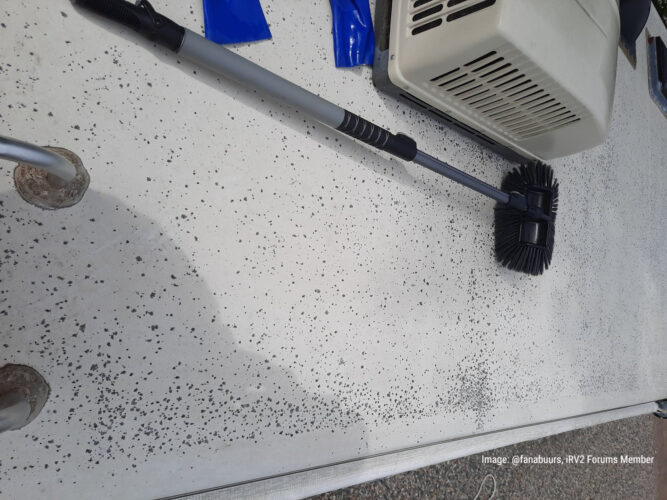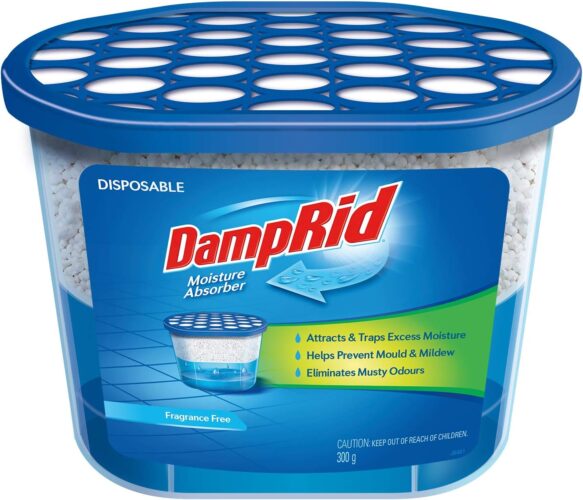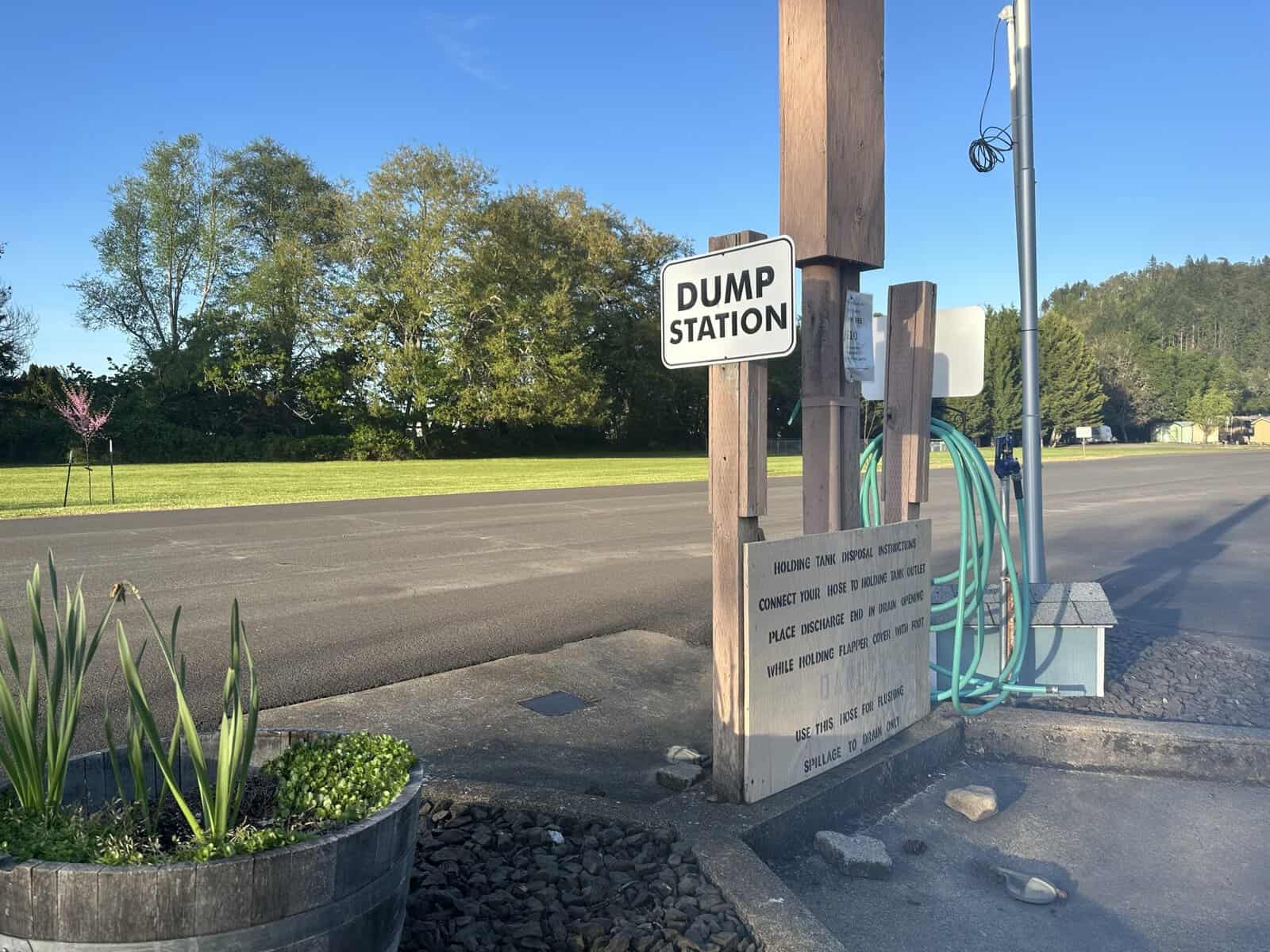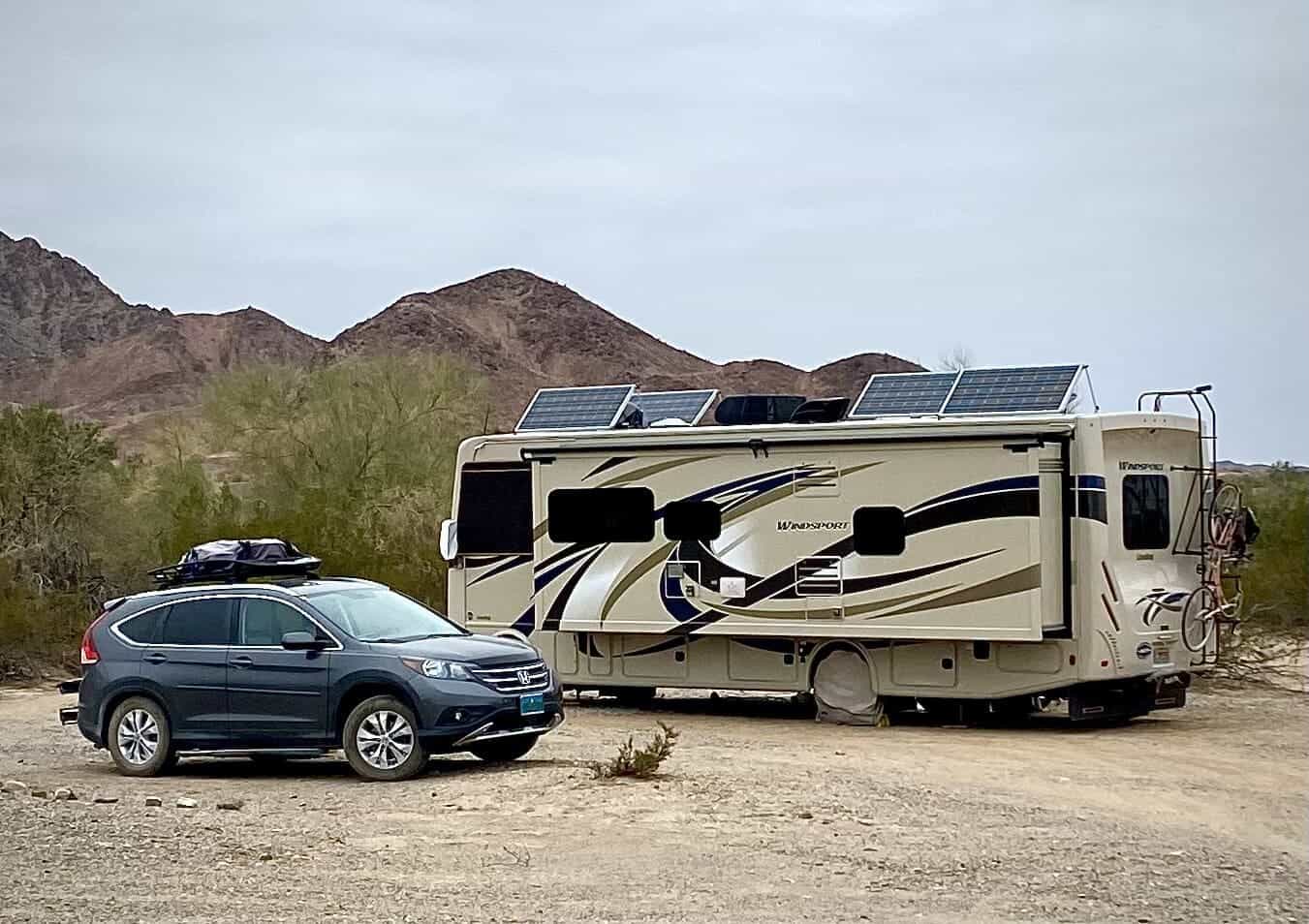Are you dealing with mold or mildew in or on your RV? Obviously that’s no fun, but it’s also not all that uncommon. As seasoned RVers, we’ve seen plenty of rigs with mold problems and we’ve learned how to deal with these problems when they come up.
Here’s what you need to know about RV mold and mildew removal.
Mold growing on the outside of an RV is not a pretty sight. It commonly attacks camper canvas on awnings, and sometimes RV mattresses get mold and mildew if condensation in the camper is really bad.
If mold and mildew grows on the inside of an RV, the fungus spores can worsen existing allergies and asthma for anyone inside.
Exterior RV Mold and Mildew Removal Tips
Fortunately, we’ve never dealt with this specific problem—likely because we tend to park in sunny places—but we’ve had plenty of friends with mold growth stains on their RVs.
From what we’ve learned, RV mold and mildew prevention (and removal) is easy to deal with if you know what you’re doing. Here’s what you do.
A Recipe to Remove Mold from Exterior Walls
Is there mold growing on the outside walls of your rig? Sometimes just cleaning the RV as part of your normal RV maintenance will take care of the problem. When you do, we recommend this chemical-free recipe for a DIY RV mold and mildew remover.
How to Clean Mold from an RV Roof
Let’s say the mold and mildew is on the roof rather than the walls. In this case, you will need to be careful what you clean with, as not all cleaning products are safe for rubber roofs.
Should You Use Bleach to Clean RV Roof Mold?
Most people recommend using a solution of warm water and a splash of bleach. The EPA does not recommend bleach for routine household mold removal. Instead, a regular detergent or white vinegar tends to be a more effective mold killer, is safe to use on an RV roof, and is generally safer for people and animals, too.
Removing Mold from an RV Awning
Do you need to tackle the task of removing mold or mildew from the RV awning? This is another instance where the hot water and vinegar mixture should do the trick.

How to Get Rid of Mold and Mildew Inside the Camper
Unfortunately, we recently found mold inside of our RV under the vinyl flooring. Mold inside an RV can be much more difficult to deal with. Many of the panel surfaces on the inside of your RV are porous, making it impossible to completely remove all mold spores without removing the affected materials themselves.
Fortunately, we were able to get rid of our mold problem quickly and prevented it from coming back. Here’s what we did.
1. Seal
First, we took care of the leak that was causing the area to get wet. This might mean resealing a seam on the outside of the RV. It could also mean repairing a leak under a sink, shower, or toilet. This helps ensure the mold doesn’t grow back and is an important first step.
2. Prep
Next, I put on long pants, long sleeves, safety goggles, and a respirator mask. I removed all fabric or carpet that came in contact with the mold from the rig entirely and disposed of them.
3. Spray
I sprayed all remaining mold with a mold-killing agent. I attacked ours with hydrogen peroxide in a spray bottle, but you could also use any of the following:
- Vinegar
- Tea tree oil
- Borax
4. Scrub
We allowed the solution to sit for half an hour, giving it a chance to kill some spores and loosen up the mold. Later, we hit the area again with a spray bottle of water and peroxide, then wiped up the mold, scrubbing when necessary. You’ll want to repeat this process until the mold is no longer visible.
5. Observe
Finally, we allowed the area to dry completely and then kept an eye on it. In our case, the mold did not grow back, and there was no rot present, so we replaced the flooring and moved on. If the mold grows back or there is rot present, you will need to remove that piece of the floor or wall and replace it with new wood.
Preventing Mold and Mildew in Your RV
Now that your camper is free of mold and mildew, the next task is keeping it that way. Luckily, this is fairly easy to do as long as you stay on top of a few things.
Maintain Seals
Repair Leaks
Run a Dehumidifier
Use DampRid

Park in the Sun
Avoid Wet Spots
Use RV Covers Wisely
Wash Regularly
Ready to Get Rid of Your Moldy RV Walls?
By now, you know pretty much everything you need to know about removing mold and mildew from your RV. Now it’s time to get out there and get scrubbing. The sooner your RV is clean, the sooner you can head out on your next adventure!




